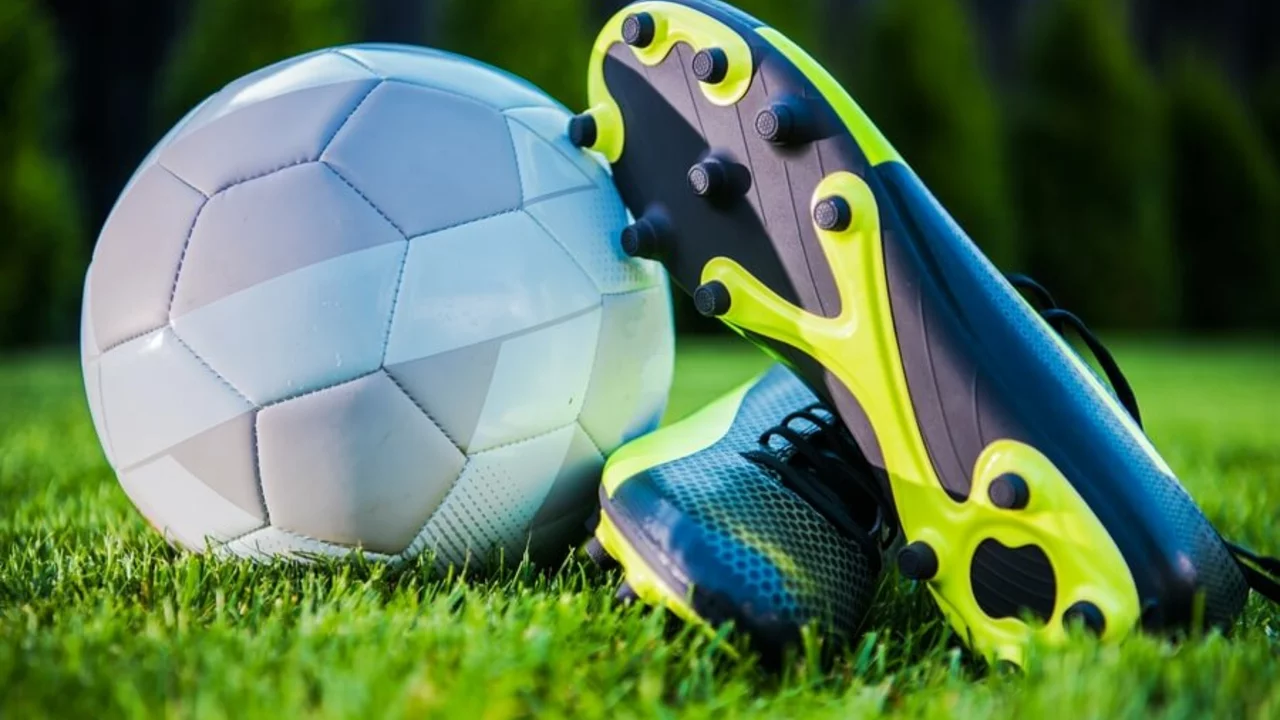A Kick Off on the Mystery of Cleats- Soccer Vs Football
Now and again, whilst standing on the sidelines and cheering on my kids, Jasper and Amelia, I've found my gaze wandering from their nimble manoeuvres to the pitch. I've noticed how the stalwart cleats clutch the grass with fierce tenacity, offering a rare glimpse into a somewhat underappreciated facet of the sporting world. We all know cleats are essential for most field sports but have you ever paused to wonder, why are soccer cleats different than football cleats? Pull up a comfy chair, dear reader, as I lead you on a ferocious slide tackle into the world of sport's shoes.
The Agenda of Cleats: All About Traction
Laying the groundwork for our discussion is the purpose of cleats regardless of the sport. Cleats, those little protrusions on the bottom of the shoes, are designed to improve traction on grass or muddy surfaces, enhancing the player's stability and agility. Whether you're my daughter Amelia performing a heart-stopping corner kick or my son Jasper rushing for a touchdown, you'll need excellent traction to perform your best. That, friends, is where the unsung hero of the sporting world, the humble cleat, steps in.
Size Matters: The Tale of Shapes and Lengths
The differences between soccer cleats and football cleats really get interesting when we delve into the world of shapes and lengths. Soccer cleats have generally short, round studs designed for quick manoeuvring on the pitch. They're built for nimble side-step movements, explosive sprints, and dynamic pivots that come with a game full of changeable dynamics, just like Amelia skipping about like a whirling dervish. In stark contrast, football cleats are equipped with longer, thicker studs because the sport involves a lot of traction and stability for high impact manoeuvres, much like Jasper when he's hulking towards the field in the final minutes of a tightly contested game. Both are unique, serving a designated purpose of ensuring optimal performance, every single time the game whistle blows.
Construction Brouhaha: Between Upper and Outsole
The greatest divergence between soccer and football cleats lies in their construction. Soccer cleats typically feature a low-cut design with a thin, soft upper to reduce weight, maximising agility and ball control. They often grace the feet of speedsters who focus on short bursts of acceleration and precision, something which my son Jasper often practices in the backyard. Football cleats, however, come in high-cut and mid-cut varieties, providing fuller coverage around the ankle for extra protection and support during high impact plays. They are tailored for a sport that is both aggressive and strategic, and are built to withstand the challenges of a gruelling gridiron match.
The Schism in the Material Realm
The worlds of soccer and football cleats have a chasm when it comes to the selection of their materials. Soccer cleats, in their quest for lightness and flexibility, usually employ synthetic fabrics or thin, supple leathers. They needed to be form-fitting and highly responsive to minute flexion in the foot, like an extension of your body. On the other hand, football cleats are typically fashioned from thicker materials, like sturdy leathers and hardy synthetics, to provide much-needed arch support and endure repetitive contact with other players.
The Contrariety of Cleat Patterns
The underfoot cleat display patterns of football and soccer shoes vary incredibly. Soccer cleats have a uniform pattern, meant to evenly distribute player weight and offer a consistent feel regardless of what part of the foot is used to kick. Football cleats, however, feature a variety of cleat patterns and placements to suit different positions. For example, linemen might prefer a cleat with studs in the heel to assist in digging into the ground during a play. Good shoe selection can really help to boost the player's confidence, just like Jasper, who revels in terrorising defences with his mind-boggling wide receiver plays.
Models On The Runway: Soccer and Football Cleats
Now, I know it's not a fashion contest out there on the pitch or the gridiron, but these cleats sure do make a statement. Soccer cleats, with their aerodynamic, slick designs and vibrant colours, certainly turn heads. Meanwhile, football cleats have a certain rugged appeal in their tough, rigid forms that scream power and tenacity. Ultimately, though, the beauty of the cleat comes from its functionality. How does it mould to the foot? How does it grip the turf? How does it improve performance? That, my fellow sports enthusiasts, is the true measure of perfection.
Conclusion: A Tailor-Made Fit for Every Sport
From the shape and length of the studs to the overall construction, the materials used, and even the design, soccer and football cleats are poles apart. Yet, they are each perfectly designed for the demands of their respective sport, ensuring top performance on the field. So the next time you watch a game, whether it's soccer or football, spare a thought for these unsung heroes. And the next time someone asks, "Why are soccer cleats different than football cleats," share this read and watch them become the most popular person at the next sports trivia meet-up.
